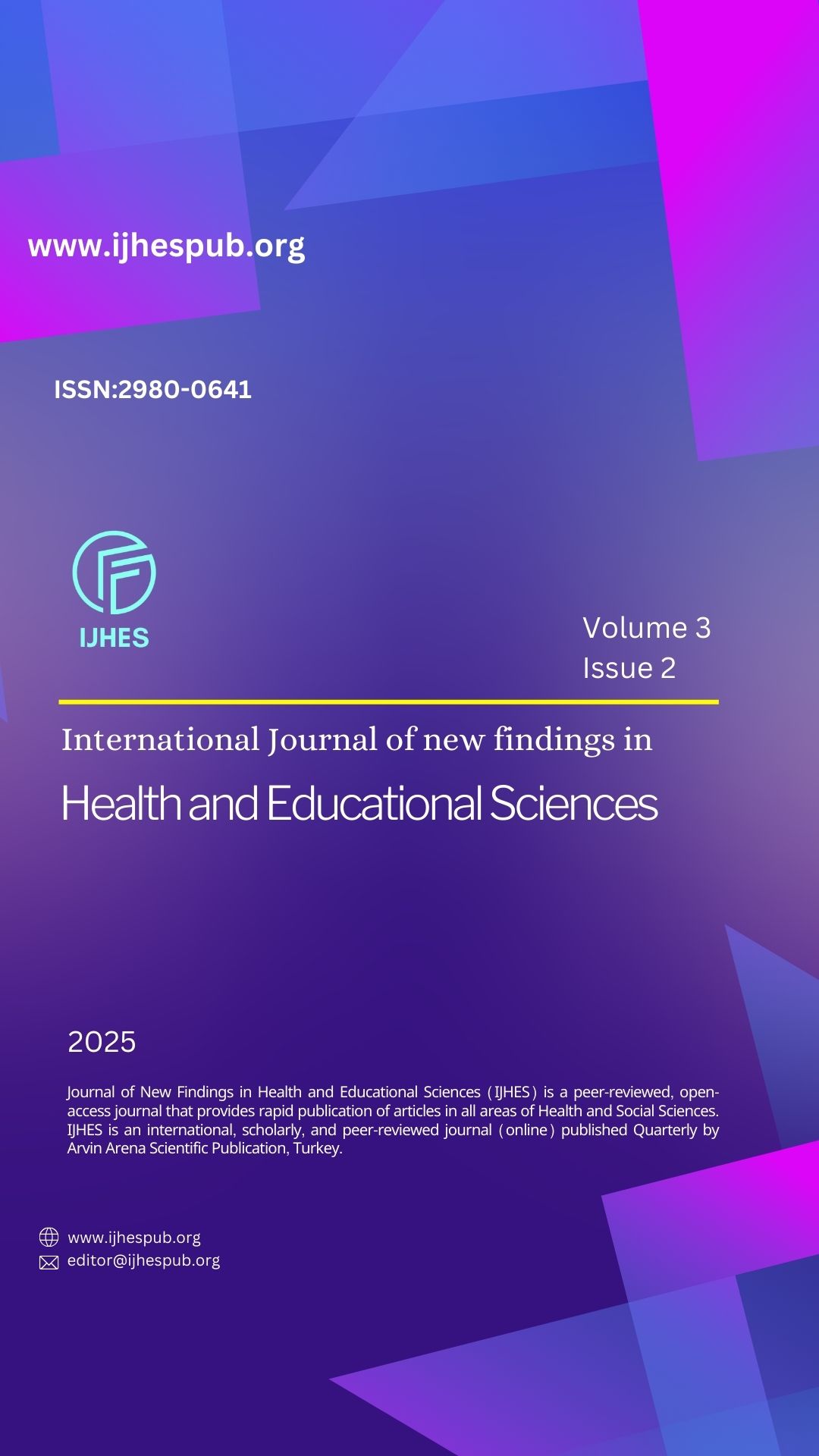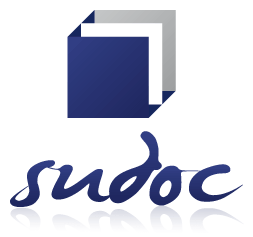Overview of Bioremediation (Bacteria) of Some Heavy Metals and Metalloids from 2014 to 2024
DOI:
https://doi.org/10.63053/ijhes.148Keywords:
metals and metalloids, effluent, soil, wastewater, biosorption and bioremediation, bacteriaAbstract
The continuous growth of humanity across the globe has led to an increased demand for goods that support human life. Consequently, large-scale industrialization occurs to meet these needs by introducing new alternatives. However, large-scale production of such goods has significantly harmed the environment. Industrial effluents contain numerous toxic substances, including heavy metals and metalloids, which are discharged into rivers, lakes, ponds, soil, and the environment during various operations. The results from various researchers have demonstrated that bioremediation is a highly constructive and attractive option that employs microbial activity for the remediation, cleansing, management, and recovery of water and soil contaminated with various heavy metals and metalloids. This method can be beneficial and advantageous for the treatment of wastewater and effluents without any microbial pollution.Based on the review of 54 articles and one thesis in this study, it has been concluded that bioremediation is a technique free from any type of pollution, offering minimal-cost solutions for bioremediation by enhancing natural degradation and biosorption processes. Therefore, with the development of understanding of microbial communities and their responses to natural environments and pollutants, the expansion of knowledge in microbial genetics and genetic engineering to enhance pollutant degradation capabilities, conducting field experiments, and the implementation of new cost-effective bioremediation techniques, it is essential to allocate sites where these opportunities are reserved for long-term research objectives.
References
• Al-Falah, F., & Saja, M. (2017). Essential trace elements and their vital roles in the human body. Indian Journal of Advances in Chemical Science, 5, 127-136. https://doi.org/10.22607/IJACS.2017.503003
• Ariafar, A., Samanian, K., & Afsharpour, M. (2015). Optimization of carboxymethyl cellulose against microorganism agents using titanium dioxide nanoparticles in order to improve the protective quality of this polymer in the restoration of paper documents. 25th Year, First Office, Spring 2015.
• Bathla, S., & Jain, T. (2016). Heavy metals toxicity. International Journal of Health Sciences & Research, 6(5). Retrieved from www.ijhsr.org
• Cervantes, M., Antonio, P., Ziarati, P., & Frutos, P. (2023). Bioremediation. In Bioremediation (pp. 1141-1). Springer. https://doi.org/10.1007/978-3-030-02006-4_1141-1
• Coelho, L. M., Rezende, H. C., Coelho, L. M., de Sousa, P. A. R., Melo, D. F. O., & Coelho, N. M. M. (2015). Bioremediation of polluted waters using microorganisms. In Advances in Bioremediation of Wastewater and Polluted Soil. https://doi.org/10.5772/60770
• Das, P., Sinha, S., & Mukherjee, S. K. (2014). Nickel bioremediation potential of Bacillus thuringiensis KUNi1 and some environmental factors in nickel removal. Bioremediation Journal, 18(2), 169–177.
• Dixit, R., Wasiullah, Malaviya, D., Pandiyan, K., Singh, U., Sahu, A., & Paul, D. (2015). Bioremediation of heavy metals from soil and aquatic environment: An overview of principles and criteria of fundamental processes. Sustainability, 7(2), 2189–2212. https://doi.org/10.3390/su7022189
• Eslami, R. N. (2015). Removal of heavy metal from aqueous environments using bioremediation technology – review. Journal of Health in the Field, 3(2).
• Figueiredo, N. L., Canário, J., O’Driscoll, N. J., Duarte, A., & Carvalho, C. (2016). Aerobic mercury-resistant bacteria alter mercury speciation and retention in the Tagus Estuary (Portugal). Ecotoxicology and Environmental Safety, 124, 60–67.
• Gomes, P. F., Lennartsson, P. R., Persson, N.-K., & Taherzadeh, M. J. (2014). Heavy metal biosorption by Rhizopus sp. biomass immobilized on textiles. Water, Air, & Soil Pollution, 225(2). https://doi.org/10.1007/s11270-013-1834-4
• Gu, J., Sunahara, G., Duran, R., Yao, J., Cui, Y., Tang, C., Li, H., & Mihucz, V. G. (2019). Sb(III)-resistance mechanisms of a novel bacterium from non-ferrous metal tailings. Ecotoxicology and Environmental Safety, 186, 109773.
• Gupta, M. K., Kumari, K., Shrivastava, A., & Gauri, S. (2014). Bioremediation of heavy metal polluted environment using resistant bacteria. Journal of Environmental Research and Development, 8(4), 883–889.
• Hayati, T. (2018). Isolation and identification of bacteria absorbing/resistant to titanium dioxide (Master’s thesis). Nordanesh Mime Institute.
• Hayati, T., Heidarian Naini, F., & Vikhchali, B. (2018). Investigation of the resistance of bacteria resistant to titanium dioxide metal isolated from soil and industrial effluents. The 6th National Congress of Biology and Natural Sciences of Iran.
• Hayati, T., Korkorian, N., & Sadeghi, A. (2024). A review of various engineered bioremediation methods. The 7th International Conference of Biology and Natural Sciences of Iran.
• Hussein, S. H., Qurbani, K., Ahmed, S. K., Tawfeeq, W., & Hassan, M. (2024). Bioremediation of heavy metals in contaminated environments using Comamonas species: A narrative review. Biotechnology Reports, 25, 101711. https://doi.org/10.1016/j.biteb.2023.101711
• Irshad, S., Xie, Z., Wang, J., Nawaz, A., Luo, Y., Wang, Y., & Mehmood, S. (2020). Indigenous strain Bacillus XZM assisted phytoremediation and detoxification of arsenic in Vallisneria denseserrulata. Journal of Hazardous Materials, 381, 120903.
• Jadaa, W., & Mohammed, H. K. (2023). Heavy metals – Definition, natural and anthropogenic sources of releasing into ecosystems, toxicity, and removal methods – An overview study. Journal of Ecological Engineering, 24(6), 249-271. https://doi.org/10.12911/22998993/162955
• Jobby, R., & Desai, N. (2017). Bioremediation of heavy metals. Environmental Science & Engineering, 8, Biodegradation and Bioremediation.
• Kesawat, M. S., et al. (2020). Metalloids and their role in the biological system. In R. Deshmukh, D. K. Tripathi, & G. Guerriero (Eds.), Metalloids in Plants: Advances and Future Prospects (First Edition).
• Kumar, K., Dahms, H.-U., Won, E.-J., Lee, J.-S., & Shin, K.-H. (2015). Microalgae – A promising tool for heavy metal remediation. Ecotoxicology and Environmental Safety, 113, 329–352. https://doi.org/10.1016/j.ecoenv.2014.12.019
• Kumar, M., Kumar, V., Varma, A., Prasad, R., Sharma, A. K., Pal, A., Arshi, A., & Singh, J. (2016). An efficient approach towards the bioremediation of copper, cobalt and nickel contaminated field samples. Journal of Soils and Sediments, 16(8), 2118–2127.
• Loni, P. C., Wu, M., Wang, W., Wang, H., Ma, L., Liu, C., Song, Y., & Tuovinen, H. O. (2020). Mechanism of microbial dissolution and oxidation of antimony in stibnite under ambient conditions. Journal of Hazardous Materials, 385, 121561.
• Lashani, E., Amoozegar, M. A., Turner, R. J., & Moghimi, H. (2023). Use of microbial consortia in bioremediation of metalloid polluted environments. Microorganisms, 11(4), 891. https://doi.org/10.3390/microorganisms11040891
• Ma, H., Wei, M., Wang, Z., Hou, S., Li, X., & Xu, H. (2020). Bioremediation of cadmium polluted soil using a novel cadmium immobilizing plant growth promotion strain Bacillus sp. TZ5 loaded on biochar. Journal of Hazardous Materials, 388, 122065.
• Massoud, R., Hadiani, M. R., Hamzehlou, P., & Khosravi-Darani, K. (2019). Bioremediation of heavy metals in food industry: Application of Saccharomyces cerevisiae. Electronic Journal of Biotechnology, 37, 56–60.
• Nguyen, V. K., Choi, W., Yu, J., & Lee, T.-H. (2017). Microbial oxidation of antimonite and arsenite by bacteria isolated from antimony-contaminated soils. International Journal of Hydrogen Energy, 42(45), 27832–27842.
• Nguyen, V. K., Park, Y., & Lee, T. (2019). Microbial antimonate reduction with a solid-state electrode as the sole electron donor: A novel approach for antimony bioremediation. Journal of Hazardous Materials, 377, 179–185.
• Nistala, S., Samatha, S., & Sahu, K. (2021). Mechanisms, types, effectors, and methods of bioremediation: The universal solution. In Bioremediation (pp. 10-2). https://doi.org/10.1016/B978-0-12-822503-5.00010-2
• Ojuederie, O. B., & Babalola, O. O. (2017). Microbial and plant-assisted bioremediation of heavy metal polluted environments: A review. International Journal of Environmental Research and Public Health, 14(12), 1504.
• Pandey, D., Kehri, H., Zoomi, I., Akhtar, O., & Chaturvedi, S. (2021). Bioremediation of arsenic contamination from the environment: New approach to sustainable resource management. Journal of Applied and Natural Science, 13, 1499-1517. https://doi.org/10.31018/jans.v13i4.2986
• Peng, W., Li, X., Song, J., Jiang, W., Liu, Y., & Fan, W. (2018). Bioremediation of cadmium- and zinc-contaminated soil using Rhodobacter sphaeroides. Chemosphere, 197, 33–41.
• Priyalaxmi, R., Murugan, A., Raja, P., & Raj, K. D. (2014). Bioremediation of cadmium by Bacillus safensis (JX126862), a marine bacterium isolated from mangrove sediments. International Journal of Current Microbiology and Applied Sciences, 3(12), 326–335.
• Purkan, P., Nurmalyya, S., & Hadi, S. (2016). Resistance level of Pseudomonas stutzeri against mercury and its ability in production of mercury reductase enzyme. Molekul, 11(2), 230–238.
• Raffa, C. M., Chiampo, F., & Shanthakumar, S. (2021). Remediation of metal/metalloid-polluted soils: A short review. Applied Sciences, 11, 4134. https://doi.org/10.3390/app11094134
• Saha, R. P., Samanta, S., Patra, S., Sarkar, D., Saha, A., & Singh, M. K. (2017). Metal homeostasis in bacteria: The role of ArsR–SmtB family of transcriptional repressors in combating varying metal concentrations in the environment. BioMetals, 30(4), 459–503.
• Sen, S. K., Raut, S., Dora, T. K., & Mohapatra, P. K. (2014). Contribution of hot spring bacterial consortium in cadmium and lead bioremediation through quadratic programming model. Journal of Hazardous Materials, 265, 47–60.
• Shen, Y., Zhu, W., Li, H., Ho, S. H., Chen, J., Xie, Y., & Shi, X. (2018). Enhancing cadmium bioremediation by a complex of water-hyacinth derived pellets immobilized with Chlorella sp. Bioresource Technology, 257, 157–163.
• Shi, Z., Zhang, Z., Yuan, M., Wang, S., Yang, M., Yao, Q., Ba, W., Zhao, J., & Xie, B. (2020). Characterization of a high cadmium accumulating soil bacterium, Cupriavidus sp. WS2. Chemosphere, 247, 125834.
• Sun, W., Xiao, E., Dong, Y., Tang, S., Krumins, V., Ning, Z., Sun, M., Zhao, Y., Wu, S., & Xiao, T. (2016). Profiling microbial community in a watershed heavily contaminated by an active antimony (Sb) mine in Southwest China. Science of the Total Environment, 550, 297–308.
• Sun, X., Li, B., Han, F., Xiao, E., Wang, Q., Xiao, T., & Sun, W. (2019). Vegetation type impacts microbial interaction with antimony contaminants in a mining-contaminated soil environment. Environmental Pollution, 252(Pt B), 1872–1881.
• Tarfeen, N., Nisa, K. I., Hamid, B., Bashir, Z., Yatoo, A. M., Dar, M. A., Mohiddin, F. A., Amin, Z., Ahmad, R. A., & Sayyed, R. Z. (2022). Microbial remediation: A promising tool for reclamation of contaminated sites with special emphasis on heavy metal and pesticide pollution: A review. Processes, 10, 1358.
• Verma, S., & Kuila, A. (2019). Bioremediation of heavy metals by microbial process. Environmental Technology & Innovation, 14, 100369.
• Vaksmaa, A., Guerrero-Cruz, S., Ghosh, P., Zeghal, E., Hernando-Morales, V., & Niemann, H. (2023). Role of fungi in bioremediation of emerging pollutants. Frontiers in Marine Science, 10, 1070905. https://doi.org/10.3389/fmars.2023.1070905
• Wu, B., Wang, Z., Zhao, Y., Gu, Y., Wang, Y., Yu, J., & Xu, H. (2019). The performance of biochar-microbe multiple biochemical material on bioremediation and soil micro-ecology in the cadmium aged soil. Science of the Total Environment, 686, 719–728.
• Yue, Z.-B., Li, Q., Li, C., Chen, T., & Wang, J. (2015). Component analysis and heavy metal adsorption ability of extracellular polymeric substances (EPS) from sulfate reducing bacteria. Bioresource Technology, 194, 399–402. https://doi.org/10.1016/j.biortech.2015.07.042
• Yan, L., Hu, H., Zhang, S., Chen, P., Wang, W., & Li, H. (2017). Arsenic tolerance and bioleaching from realgar based on response surface methodology by Acidithiobacillus ferrooxidans isolated from Wudalianchi volcanic lake, northeast China. Electronic Journal of Biotechnology, 25, 50-57.
• Zafarzadeh, A., Shahamat, Y. D., Sangbari, N., & Beirami, S. (2017). Heavy metal contamination in the effluent and sludges of wastewater treatment plant in Gorgan, Iran. Journal of Mazandaran University of Medical Sciences, 27(150), 158-169.
• Zhang, Z., Shi, Z., Yuan, M., Wang, S., Yang, M., Yao, Q., Ba, W., Zhao, J., & Xie, B. (2020). Characterization of a high cadmium accumulating soil bacterium, Cupriavidus sp. WS2. Chemosphere, 247, 125834.
• Zhao, Y., Gu, Y., Wang, Z., Wu, B., Wang, Y., Yu, J., & Xu, H. (2019). The performance of biochar-microbe multiple biochemical material on bioremediation and soil micro-ecology in the cadmium aged soil. Science of the Total Environment, 686, 719–728.
• Zheng, Y., Zhang, Z., Shi, Z., Yuan, M., Wang, S., Yang, M., Yao, Q., Ba, W., Zhao, J., & Xie, B. (2020). Characterization of a high cadmium accumulating soil bacterium, Cupriavidus sp. WS2. Chemosphere, 247, 125834.
• Zhao, J., Zhang, Z., Shi, Z., Yuan, M., Wang, S., Yang, M., Yao, Q., Ba, W., & Xie, B. (2020). Characterization of a high cadmium accumulating soil bacterium, Cupriavidus sp. WS2. Chemosphere, 247, 125834.
• Zhuang, X., Zhang, Z., Shi, Z., Yuan, M., Wang, S., Yang, M., Yao, Q., Ba, W., & Xie, B. (2020). Characterization of a high cadmium accumulating soil bacterium, Cupriavidus sp. WS2. Chemosphere, 247, 125834.
• Zhuang, X., Zhao, Y., Gu, Y., Wang, Z., Wu, B., Wang, Y., Yu, J., & Xu, H. (2019). The performance of biochar-microbe multiple biochemical material on bioremediation and soil micro-ecology in the cadmium aged soil. Science of the Total Environment, 686, 719–728.
• Zhuang, X., Zhao, J., Zhang, Z., Shi, Z., Yuan, M., Wang, S., Yang, M., Yao, Q., Ba, W., & Xie, B. (2020). Characterization of a high cadmium accumulating soil bacterium, Cupriavidus sp. WS2. Chemosphere, 247, 125834.
Downloads
Published
How to Cite
Issue
Section
License
Copyright (c) 2025 Authors

This work is licensed under a Creative Commons Attribution 4.0 International License.
The journal is licensed under a Attribution 4.0 International (CC BY 4.0).
You are free to:
- Share — copy and redistribute the material in any medium or format for any purpose, even commercially.
- Adapt — remix, transform, and build upon the material for any purpose, even commercially.
- The licensor cannot revoke these freedoms as long as you follow the license terms.
Under the following terms:
- Attribution - You must give appropriate credit , provide a link to the license, and indicate if changes were made . You may do so in any reasonable manner, but not in any way that suggests the licensor endorses you or your use.
- No additional restrictions - You may not apply legal terms or technological measures that legally restrict others from doing anything the license permits.












